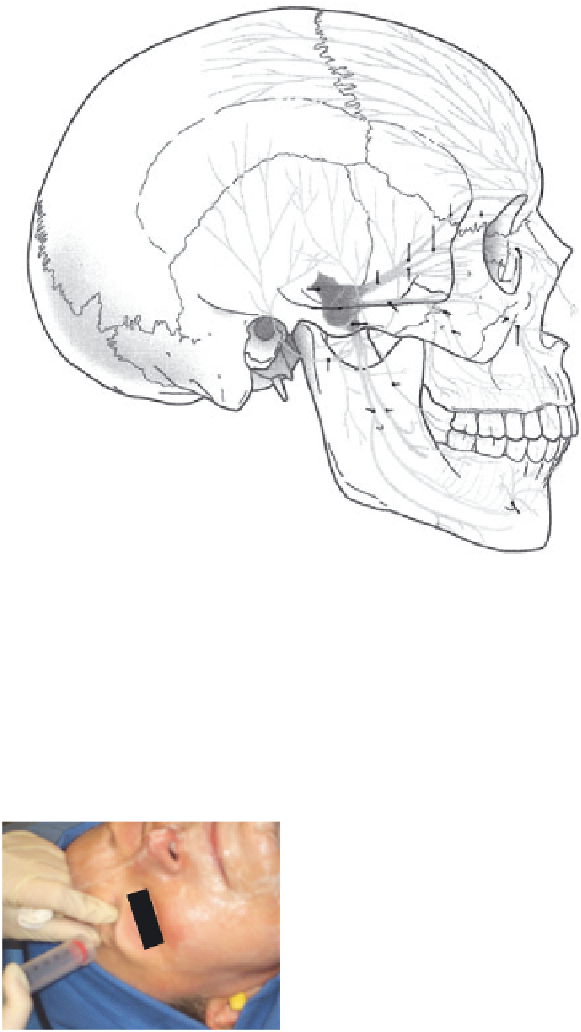Biomedical Engineering Reference
In-Depth Information
7
8
6
5
3
9
1
2
4
12
13
14
16
10
11
15
17
20
18
19
1. Trigeminla nerve
2. Trigeminal (Gasseriar) ganglion
3. Ophthalmic nerve
4. Nasociliary nerve
5. Supraorbital nerve
6. Lacrimal nerve
7. Frontal nerve
8. Supratrochlear nerve
9. Infratrochlear nerve
10. Maxillary nerve
11. Zygomatic nerve
12. Middle superior alveolar nerve
13. Posterior superior alveolar nerve
14. Anterior superior alveolar nerve
(
A
)
21
15. Infraorbital nerve
16. Mandibular nerve
17. Auriculotemporal nerve
18. Inferior alveolar nerve
19. Lingual nerve
20. Buccal nerve
21. Mental nerve
(
B
)
(
C
)
(
D
)
(
E
)
Figure 16.6
(
A
) Nerve blocks required for facial analgesia (Redrawn after Scott DB. Techniques of regional anaesthesia, East Norwalk, Connecticut, USA: Appleton
& Lange; 1989). (
B
) Supraorbital injection. (
C
) Maxillary nerve injection. (
D
) Mandibular nerve injection. (
E
) Auriculotemporal nerve injection.
sometimes this was followed by a fan injection in the cheek
area with the 1% solution. A retrospective chart review of 95
consenting adults receiving this anesthesia regimen in an
office-based setting indicates no evidence of hallucinations,
postoperative nausea and vomiting, and no cardiovascular
instability or seizures (signs of lidocaine toxicity). In addi-
tion, this technique allowed for an immobile, unconscious
patient with adequate local anesthesia, without the increased
equipment requirements and complication risk associated
with general anesthesia (88).






















